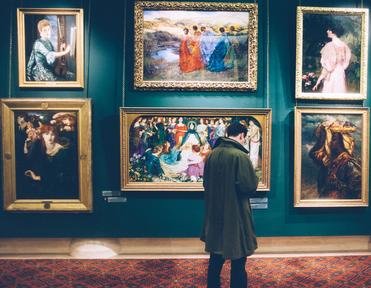Quiz Answer Key and Fun Facts
1. The paintings "Madonna with Beardless Saint Joseph" and "Conestabile Madonna" are two Renaissance-era paintings in the Hermitage by which Italian artist?
2. One of the Hermitage's most famous pieces is Canova's "Three Graces" sculptures which can be found in which room of the museum?
3. Which of the following famous paintings by Rembrandt is not housed in the Hermitage?
4. Which of the following artists did NOT have a work of art amongst the original Hermitage collection started by Catherine the Great?
5. Which famous Rembrandt painting housed in the Hermitage was nearly destroyed by a man who splashed sulfuric acid on it in 1985?
6. Which of the following rooms in the Winter Palace, now part of the Hermitage, is NOT kept in the original layout from the days of the czars?
7. What is the "Tauride Venus", an ancient statue housed in the Hermitage, missing?
8. Which of the following ancient Egyptian artifacts can be found in the Hermitage?
9. Despite their importance in Russian art, there is only one genuine Faberge egg on display in the Hermitage. Which one is it?
10. Although not works of art or artifacts, which animals, who live at the museum, are also a popular tourist site?
Source: Author
Joepetz
This quiz was reviewed by FunTrivia editor
Bruyere before going online.
Any errors found in FunTrivia content are routinely corrected through our feedback system.

